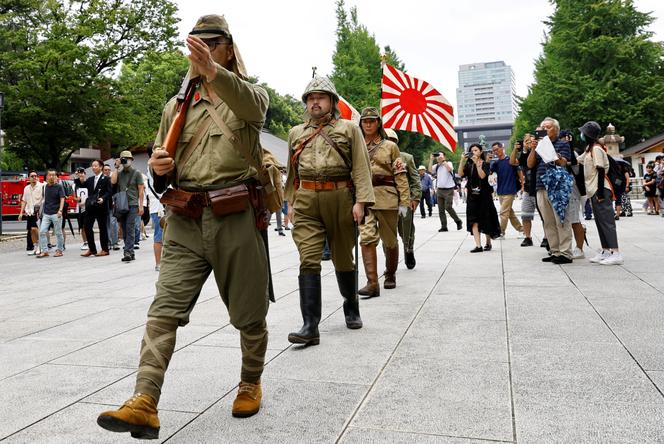


On Monday, April 1, retired vice-admiral and former ambassador Umio Otsuka became the chief priest of the Yasukuni Shrine, reflecting a desire to "renationalize" a site that symbolizes Japanese militarism in the 1930s and 1940s. The building honors the deified 2.5 million soldiers who died in Japan's wars, as well as 14 Class A war criminals. Visits to the site by prime ministers, including Shinzo Abe in 2013 (1954-2022), and members of the Japanese parliament regularly raise tensions with both Koreas and China, which suffered under Japanese imperialism.
Otsuka succeeds Tatebumi Yamaguchi as the chief priest of this Shinto shrine in the heart of Tokyo. "After 43 years of work in the service of world peace, I am proud to be able, in my new life, to serve at this 'sanctuary of peace,' where the spirits of those who gave their precious lives for their country are enshrined," said Otsuka.
Born in Tokyo in 1960, the former military officer joined the Japan Maritime Self-Defense Force, the navy branch of the Japan Self-Defense Forces (JSDF), in 1983. He headed the Navy's school for senior officers and then the Ministry of Defense's Defense Intelligence Headquarters. Retired in 2019, Otsuka became the ambassador to Djibouti, where the SDF has a base, until November 2023. His wife is Ambassador Yoshie Nakatani, currently the head of the OECD's Tokyo office.
Otsuka's career, which spans service in the Japanese army followed by a role in diplomacy, lends a political dimension to his selection by Yasukuni's directors. In the shrine's February newsletter, Otsuka explained that he had visited Yasukuni on numerous occasions, during which he led groups of foreign diplomats and military personnel.
Originally named "Tokyo Shokonsha," Yasukuni ("peaceful country") was built in 1869 as a tribute to the soldiers who died during the Boshin War (1868-1869), which put an end to the Edo shogunate (1603-1868). Until the end of the Second World War, the shrine was under the jurisdiction of the Ministries of War and the Navy.
The position of chief priest was traditionally held by members of the nobility. "This shrine made the soldiers who died for the Empire into heroic deities who sacrificed their lives in the name of Japan's peace," said Koichi Nakano of Sophia University, Tokyo.
After the conflict, the shrine was converted into an independent religious organization as a result of the secularization measures enforced by the American forces. Otsuka is the second former JSDF officer to become the shrine's head priest since 1945. Nagayoshi Matsudaira, also a former naval officer, took over as head of the shrine in 1978. He campaigned for the annulment of the verdicts handed down by the Tokyo Tribunal, which was set up after the war to try Japanese leaders in the same way that the Nuremberg trials tried Nazi leaders. Matsudaira wanted to "restore the national spirit of Japan." During his tenure, Class A war criminals were transferred to the shrine in total secrecy.
You have 20.5% of this article left to read. The rest is for subscribers only.
